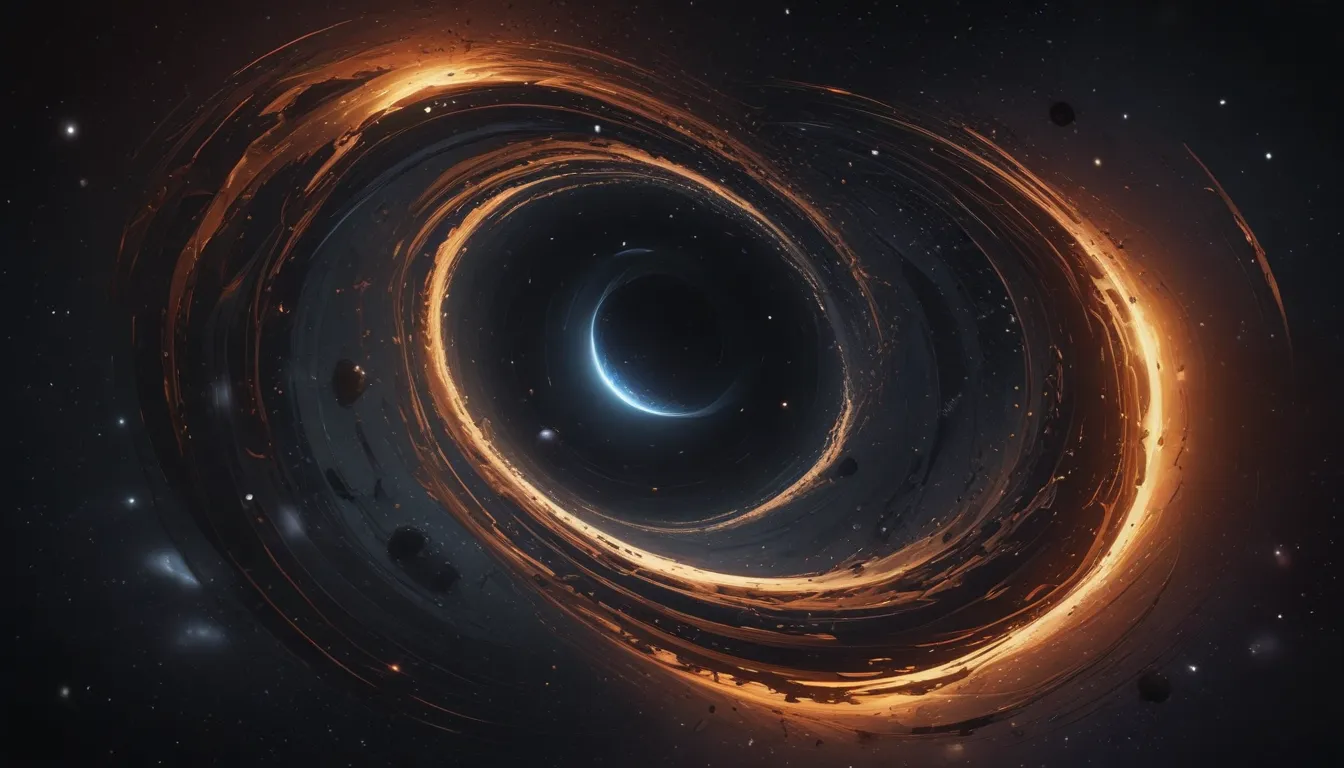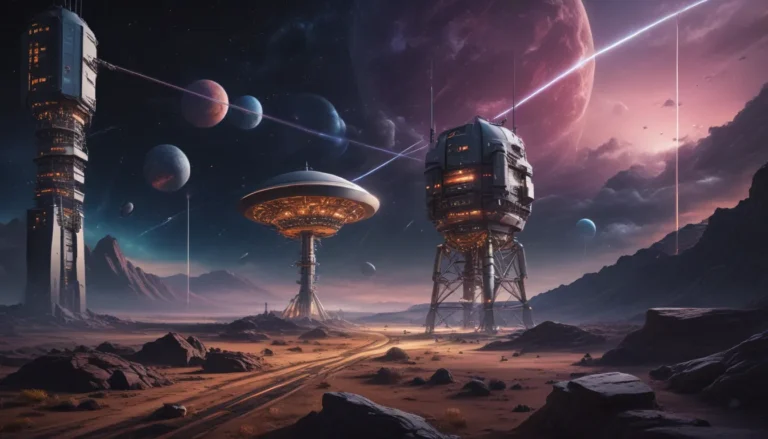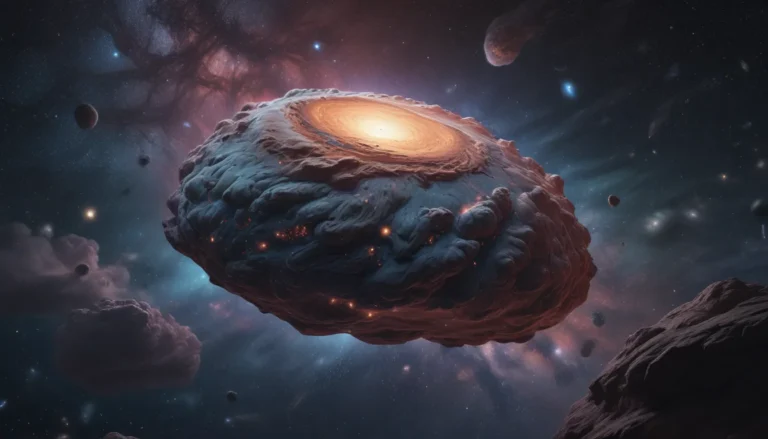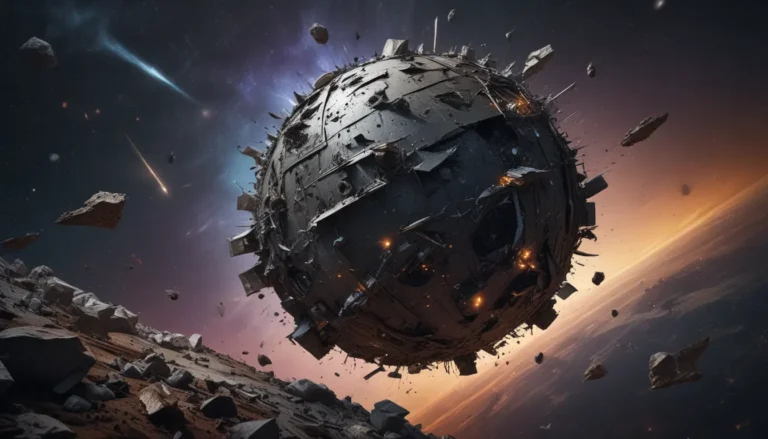The pictures we use in our articles might not show exactly what the words say. We choose these pictures to make you interested in reading more. The pictures work together with the words but don’t take their place. The words still tell you the important facts.
Black holes are some of the most fascinating and enigmatic objects in our universe, captivating the imagination of scientists and enthusiasts alike. From their formation to their properties and potential effects, the realm of black holes offers a wealth of knowledge waiting to be uncovered. In this comprehensive guide, we delve into the depths of black hole facts, shedding light on their origins, characteristics, and the mysteries that still surround them. Join us on a journey through the cosmos as we unravel the fascinating world of black holes.
Understanding Black Holes: A Closer Look
A Black Hole Is a Collapsed Star
One of the key facts about black holes is that they form when a massive star reaches the end of its life cycle and collapses under its own gravity. This collapse leads to the formation of a gravitational singularity, where the mass is compressed to an incredibly small size. The resulting black hole exerts such a strong gravitational pull that not even light can escape, earning it the name "black hole."
You Would Lose Track of Time in a Black Hole
The intense gravity of a black hole distorts both space and time, leading to mind-bending phenomena. According to Einstein's theory of general relativity, time slows down near a black hole, creating a region known as the event horizon. Once an object crosses this threshold, it is impossible to escape the gravitational grip of the black hole, leading to a journey where time loses its meaning.
Falling Into a Black Hole Would Make You Skinny
While the notion of falling into a black hole may seem terrifying, the reality is even more astounding. As an object approaches the core of a black hole, it undergoes a process known as spaghettification. The intense gravitational forces stretch the object into a long, thin strand of atoms, resembling a piece of spaghetti. This surreal experience highlights the extreme nature of black hole physics.
Unveiling the Secrets of Black Holes
We Can’t See Black Holes – but We Know Where They Are
Despite their invisible nature, scientists can detect black holes through indirect means. By observing the effects of a black hole's gravitational pull on surrounding objects, such as bending light or distorting motion, researchers can pinpoint the presence of these enigmatic entities. While we may not be able to see black holes directly, their influence on the cosmos is unmistakable.
One Theory Involves Us Living In a Black Hole
A thought-provoking concept in black hole theory suggests that our universe could be nestled within the confines of a black hole. Drawing parallels between the mass-energy density of our universe and that of a black hole, scientists speculate about the interconnected nature of reality. This intriguing hypothesis challenges our understanding of the cosmos and ignites discussions about the infinite possibilities of existence.
Black Holes Are Not The Cleaners Of The Universe
Contrary to popular belief, black holes do not indiscriminately devour everything in their path. While their gravitational pull is immense, objects must come within a certain distance, known as the event horizon, to be consumed by a black hole. Earth itself is safe from being swallowed whole, even if our Sun were to transform into a black hole. Understanding the limitations of black hole interactions dispels fears and encourages a deeper appreciation of their role in the universe.
Delving Deeper Into Black Hole Realms
Black Holes Were Discovered Hundreds of Years Ago
The concept of black holes dates back to the 18th century, with early theories proposed by visionaries such as John Michell and Pierre-Simon Laplace. These pioneering thinkers laid the groundwork for modern understanding of black holes, envisioning "dark stars" with escape velocities faster than the speed of light. The term "black hole" was coined by John Wheeler in the 20th century, solidifying our fascination with these celestial phenomena.
Black Holes Can Disappear
The renowned physicist Stephen Hawking introduced the notion of Hawking Radiation, a theoretical process through which black holes emit particles and lose mass over time. This groundbreaking idea suggests that even the most massive black holes could eventually evaporate, challenging traditional notions of black hole permanence. While the concept of black hole disappearance remains a subject of debate, Hawking's revolutionary work continues to shape our understanding of these cosmic entities.
The Core of a Black Hole May Be Smaller Than an Atom
The incomprehensible density of a black hole's core defies conventional physics, with the mass contained within being smaller than an atom. Scientists grapple with the concept of a singularity, where the laws of physics break down and traditional models fail to apply. This mind-bending reality underscores the need for a unified theory of gravity that can illuminate the mysteries hidden within black holes.
Navigating the Diversity of Black Holes
There Are Two Types of Black Holes
Black holes come in two distinct varieties: Schwarzschild and Kerr. The Schwarzschild black hole is non-rotating and characterized by a stationary core, consisting of a singularity and an event horizon. In contrast, the Kerr black hole rotates due to the angular momentum inherited from its progenitor star. With additional features such as an ergosphere and static limit, the Kerr black hole offers a dynamic perspective on these cosmic enigmas.
Our Galaxy Has a Large Black Hole
The Milky Way harbors a massive black hole at its center, named Sagittarius A, with a mass equivalent to millions of suns. This supermassive black hole exerts a profound influence on the galactic structure, shaping the motion of stars and celestial bodies within our galaxy. Despite its colossal size, Earth remains secure from any gravitational threats posed by Sagittarius A, highlighting the intricacies of black hole interactions in the cosmic tapestry.
We Don’t Know What’s in a Black Hole
The interior of a black hole remains a mystery, shrouded in the veil of infinite gravity and time dilation. Observations of rotating material surrounding black holes offer tantalizing glimpses into their inner workings, but the fate of objects that venture beyond the event horizon remains uncertain. Scientists grapple with the concept of infinite gravity and spacetime curvature, pondering the ultimate fate of matter consumed by these cosmic behemoths.
Embracing the Vastness of Black Hole Realms
Black Holes Can Merge Together
Black holes possess a voracious appetite, capable of consuming entire galaxies and merging with one another. When galaxies collide, the central black holes engage in a cosmic dance, spiraling around each other and exchanging energy. This gravitational interplay eventually culminates in the fusion of black holes into a single, larger entity, showcasing the dynamic evolution of these cosmic phenomena on a galactic scale.
Our Sun Probably Won’t Ever Turn Into a Black Hole
While our Sun will eventually exhaust its nuclear fuel and undergo a cosmic transformation, it is unlikely to become a black hole. Stars must reach a certain mass threshold to collapse into a black hole, a criterion that our Sun does not meet. Instead, our Sun is predicted to evolve into a white dwarf, offering a glimpse into the complex life cycles of celestial objects. The longevity of our Sun's transition provides both solace and insight into the diverse paths of stellar evolution.
Black Holes Come in 3 Sizes
The classification of black holes into three distinct sizes illuminates the diversity of these cosmic entities. Primordial black holes, stellar black holes, and supermassive black holes represent varying scales of mass and gravitational influence. From minute atom-sized primordial black holes to colossal supermassive counterparts at the heart of galaxies, the spectrum of black hole sizes underscores the immense range of cosmic phenomena that shape our understanding of the universe.
Navigating the Cosmic Landscape
We Are 20,000 Light Years From the Nearest Black Hole
Recent recalculations of the distance to the nearest black hole reveal a more substantial gap between Earth and these enigmatic entities. While initial estimates placed us in close proximity to black holes, revised measurements place us more than 20,000 light years away from the nearest cosmic singularity. This newfound sense of distance offers reassurance and perspective on the cosmic scale, highlighting the vastness of the universe and the mysteries that lie beyond.
We Still Have Much to Learn About Black Holes
As we venture deeper into the realm of black holes, the prospect of discovery and exploration looms large on the horizon. Scientists continue to unravel the complexities of these cosmic phenomena, uncovering new insights and challenging existing theories. While black holes remain a source of intrigue and speculation, they also serve as beacons of scientific inquiry, beckoning us to probe the limits of our knowledge and venture into the unknown depths of the universe.
Concluding Thoughts on Black Hole Realms
In conclusion, the world of black holes offers a captivating journey through the mysteries of the universe, inviting us to explore the boundaries of physics and cosmology. From their formation as collapsed stars to their gravitational influence on celestial bodies, black holes embody the enigmatic nature of space and time. As we delve deeper into the secrets of black holes, we unlock a wealth of knowledge that transcends our understanding of the cosmos, inspiring wonder and curiosity in equal measure. Join us on this cosmic odyssey as we navigate the complexities of black hole realms and unravel the mysteries that lie within the vast expanse of the universe.






